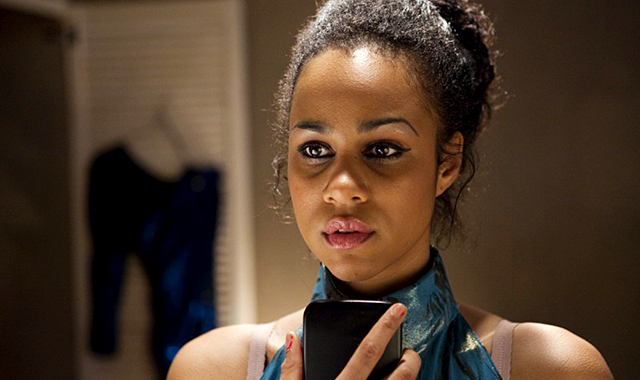
On January 25, 2006, the body of Joyce Vincent was found on the sofa in her housing project studio flat, which backed on to a busy shopping center in Wood Green, North London. The television was on and there were unopened Christmas presents on the floor beside her. She had been dead since December 2003 and the body was so badly decomposed that her identity could only be ascertained by comparing her dental records with a holiday photograph in which she was smiling.

Zawe Ashton as Joyce Vincent in "Dreams of a Life." / Courtesy dreamsofalife.com
A beautiful, popular, and once gregarious Londoner of Caribbean and Indian descent, Vincent had been 38 when she died. She had seemingly been forgotten about - by her friends, by her father and four sisters (with whom she apparently had no contact), and by the authorities whose job it was to collect her rent.
The filmmaker Carol Morley discovered the Vincent case when she chanced upon a report of the grisly discovery in The Sun newspaper -- not that there was much of a story or even a photograph. Police could find no evidence of foul play, so Morley decided to create the most detailed narrative she could of Vincent's existence, as an act of memorialization. The resulting movie, "Dreams of a Life," is heartrending. Inevitably, though, the mystery of Vincent's fate proves unignorable. How can someone with as many social connections as Vincent had simply be allowed to evaporate at the heart of a metropolis?
A writer-director who has worked in both fiction and documentary films, Morley blends both disciplines in "Dreams of a Life," conducting talking-head interviews and constructing imagined scenes from Vincent's early family life and of her having fun as an adult, singing in a friend's studio (she aspired to being an R&B performer), and dancing with several guys (she was, everyone agrees, a man magnet). And facing the end alone.
After a search for people who knew Vincent, Morley assembled enough acquaintances (flatmates, colleagues, friends, and friends of friends, but tellingly no relatives) to piece together an oral version of her life, which ran the gamut from mixing with music celebrities like Jimmy Cliff and Gil Scott-Heron and meeting Nelson Mandela to taking refuge in a domestic-abuse shelter. Some speculate she was the victim of child abuse or that she was murdered (Vincent's asthma and hospitalization with a peptic ulcer may have greater bearing on her demise). Others confess their guilt at losing touch with her. The word suicide never comes up, though she had been on a downward spiral before her death.
The two ex-boyfriends who spoke to Morley for the film couldn't be more different: one is a sweet, gentle, man, probably the best friend she ever had, who breaks down on camera through grief; the other is a guarded onetime manager of successful music acts who says he had an intense live-in affair with her yet articulates the belief that "Joyce died alone because she wanted to be alone."
The boyfriend Morley couldn't locate was the one who locked her up all day on one occasion and probably hit her. There is an implicit connection between her death and this relationship. Morley gives a little information about the man when the camera tantalizingly pans across her research notes - an irritating tic that's repeated several times - but otherwise doesn't elaborate. A woman who was enjoyable company, yet pathologically private, Vincent left few trails. (Even if Facebook had existed in 2003, she would never have signed up.)
Morley cast actors to play the young and adult Vincent, her mother (who died when Joyce was around 11) and her father (who died in 2004). Zawe Ashton is riveting as the grown Vincent, particularly in a scene in which she seductively mimes to herself the Carolyn Crawford number "My Smile Is Just a Frown" and then, when the song's done, caves in, crushed by the emptiness of her prospects and by her self-inflicted loneliness. The truth may be different, of course, but it's a convincing reading of a woman's life that is unlikely to yield any more secrets, which is the way Vincent may have wanted it. Morley does, however, have a visual revelation in store at the end of the film.
There's a certain Schadenfreude involved in watching "Dreams of a Life." Any objections to its well-meaning expansion of a sensationalistic subject will be outweighed, though, if the story of Vincent's dying unnoticed raises consciousness about the need for people to keep an eye on the solitary and stay in touch with the elusive. Social media doesn't count, only the old-fashioned notion of community spirit.
- Graham Fuller, BLOUIN ARTINFO
More of Today's News from BLOUIN ARTINFO:
Like what you see? Sign up for BLOUIN ARTINFO's daily newsletter to get the latest on the market, emerging artists, auctions, galleries, museums, and more.